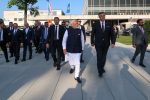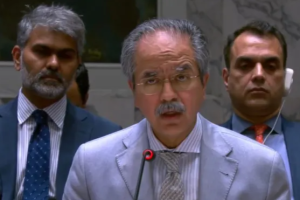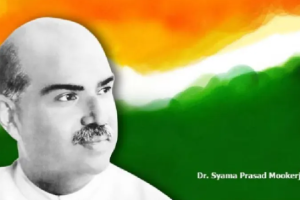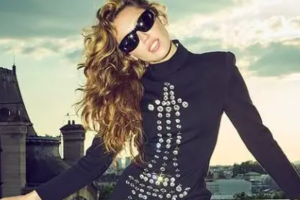Getting into the film industry is tough. But, once in the industry, one does not come alone. With him or her comes the anxiety and the insecurity. Getting in is tough, of course, but sustaining and surviving is tougher. Producers, directors and other technicians all live with the uncertainties, depending on the fate of a film they are associated with.
While the technicians could work with various film units at the same time or even with the advertising field because films were shot in phases over a couple of years, actors had little else to do besides films. The actors were burdened with a heavy load of insecurity. Their fates swung like a pendulum every Friday their film released.
Having seen the state of various stars and superstars before them only added to the insecurity of the every new lot of actors who made it to the film industry. So many big named makers and stars had died either in poverty or out of frustration after becoming irrelevant.
But, this was the norm in the film industry. Just about everybody entered with a Best Before Date; most of all, the stars.
Not going too much back into the past, imagine Rajesh Khanna. After a number of flops, finally, when he arrived, he did it with a bang and went on to give one hit after the other in a period of just about four years or so. He was the most romantic hero on screen and girls wrote love letters, not fan mail, to him in blood! Boys dressed like him and sported his haircut. Then, suddenly the trend changed. The very actor from whom he stole the show in “Anand”, returned the favour in their next film together, “Namak Haraam”. That was Amitabh Bachchan, who was destined to rule the roost displacing Rajesh Khanna.
The later generation learnt from this and decided to use the popularity to optimise earnings.
Initially, the trend was for popular playback singers like Mohammad Rafi, Lata Mangeshkar, Mukesh and others to perform in overseas stage shows. They took their audience on a nostalgia trip, reeling out old melodies (film music was all about melody those days). The eighties saw the revival of the ghazal era with Jagjit Singh leading the pack, as new talent sprang up in the form of Pankaj Udhas, Talat Aziz, Penaz Masani, Hariharan, Bhupinder and few others. The fame of some of these singers spread, and they were called for stage shows and private performances not only in all corners of India but also overseas. Some drama troupes also followed.
Initially, the filmstars” overseas jamborees started and ended with Dubai, where the underworld don Dawood was based. The stars seemed to be at his back and call; weather he wished for them to perform or to just add glamour to the cricket matches held there. You saw some of the biggest names in the film industry by his side during these cricket matches.
The stars who obliged were sent back with gifts like TV sets and video players, a priced possession back then besides a cash component of a lakh or so (a big amount in those days, for a matter of a day or two), not to mention the ”phoren” trip.
Sadly, a side effect of this Middle East era was prostitution. Merely a single film credit was enough to brand one as a filmstar and that meant high bucks. People there, somehow, took fancy to stars. This gave birth to a new racket. Some middleman would approach the trade papers with the picture of heavily but gaudily made-up girls posing as if on some film set! The trade papers charged to print photos. This facility was used by filmmakers to publish pictures of either shootings or song recordings. This helped the producers convey to their distributors and investors that the film was making progress. The girls used this facility to get branded as filmstars and proceed to the Middle East, prospect hunting in the oldest profession in the world.
This was an unexpected windfall. The smaller and side actors also joined the bandwagon, and would attend pre-wedding mehndi ceremonies as well as weddings for a lakh! There was actually a growing demand for actors to attend weddings and other ceremonies, as well as to cut ribbons for the inauguration of various enterprises.
Initially, if an actor inaugurated a shop, it merited some space in the media, especially the print media. Later, when these media guys wizened up and started charging, it was still worth it.
The ultimate came from Shakti Kapoor, about this side business that actors were becoming a part of. His reply was very candid: If I am paid a lakh, I will even attend a funeral!
I don”t think that was so much greed. Seemed more like insecurity. Make hay while the sun shines.
The big league was soon to follow. The superstars were willing to dance and regale your crowd at weddings if you happened to be among the Forbes list or a noted NRI. So the King and the rest danced to the tune of Sterling Pounds!
The ad world had taken a fancy to stars as brand ambassadors in place of the regular models and rampwalkers. Instead of dancing for the Middle East dons, the stars were now willing to sell everything from underwear to non-existent soda water as a surrogate ad for alcohol.
Once upon time, the Hindi film industry had only one awards function, the one instituted by the Filmfare magazine management in 1954. At this function, each year, best of the top stars performed on the stage. It was not about money, it was considered prestigious to be chosen to perform. For a newcomer, if chosen, it meant exposure to showcase his or her talent in front of the best of the who”who of the industry.
But, then came television and along came the sponsors. The sponsor wanted his money”s worth and the attendance of as many stars as possible started to matter. The outcome was that there would be an award statuette for almost all the glamour willing to attend. Not to mention, a bagful of money for those who performed. After all, the sponsor wanted an entertaining package for his money.
The sponsors also brought forth some more awards in Screen, Zee and IIFA, besides a few that started and faded.
There were some, of course, who were not the stage performer kind, as dancing and prancing around on stage was not their forte. They ended up those who could and were in demand for such shows as Bhaand, not quite flattering a term when translated in English!
But, money makes anybody dance. At one of the Ambani family weddings, they needed a world-renowned performer and the choice fell on the American singer, Beyonce, while the film stars handled the catering, serving food to the guests.
@The Box Office
The three new releases of last week, “Pal Pal Dil Ke Paas”, “Prassthanam” and “The Zoya Factor”, have all failed miserably. From the Ganesh festival till Diwali has never been considered an opportune time for release of new films. The footfalls don”t happen. The public reports of a film come much later, but after the audience comes. That did not happen with any of these films right from the opening show.
Wrong decision, especially for Sunny Deol, who launching the career of his son, Karan Deol.
* “Pal Pal Dil Ke Paas” had another drawback in that it turned out to be an old-fashioned love story and could manage to collect a meagre Rs 7.5 crore in its first week.
* “Prassthanam”, a film about a baahubali family and its internal power struggle, is a subject done and dusted with, and failed to appeal. The film ended its opening week with figures of a poor five crore.
* “The Zoya Factor” found few takers and closed it first week with a mere three crore.
* “Dream Girl” has proved to be a hit. The film has crossed the Rs 100 crore mark with ease, with its two-week total standing at about Rs 116 crore.
* “Chhichhore” is a major hit, adding Rs 22 crore in its third week, taking its three-week tally to Rs 121 crore.

























Add Comment